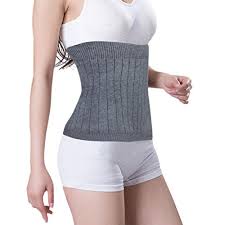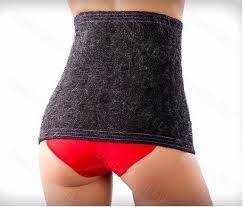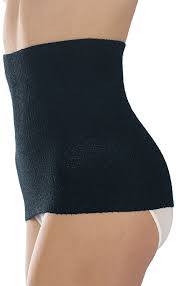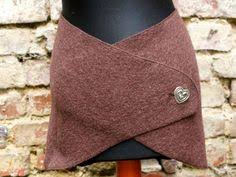Conceivably, the need to bug out may occur when you are in the shower, or snug in your bed.
You will need to wear something other than your current garb! (Although admittedly pyjamas seem to have worked well for the Viet Cong!)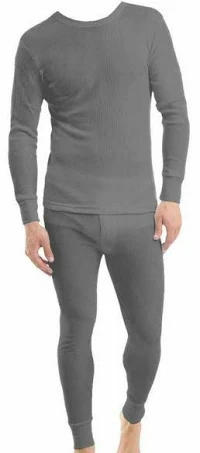

In previous articles, I have talked about having an outfit to bug out in. These may either be kept with your bug‑out bag (BOB), or in your BOB and changed into when there is time.
At the very least, you should have a good coat and pair of boots near your bag. Packing these items in your bag will take up space you could use for other items.
Your boots should be in good condition, but broken in.
It is not a bad idea to have a pair of socks with them, ready to put on. Socks may be used to form a “nightcap” over the top of boots to hinder the entry of scorpions and other critters. A plastic bag over the top keeps the moths from feasting on your good wool socks.
It is wise to give your boots a good shake before putting them on anyway.

I suggest a good coat rather than a jacket. I intend to use my desert parka, adding the warm liner if needed.
Some books suggest your main coat or jacket be a breathable waterproof. These may be insufficiently breathable or hot in warm weather. If you wear your waterproof all the time the chances of it getting damaged are higher, and they tend to be very expensive!
In anticipation of its use, various useful items are already packed into the pockets of my parka. These are not EDC items, but supplements to the EDC items I carry in/with my trousers.
Parka contents include: neck-gaiter/headover, scrim scarf/veil, merkalon gloves, compass with sighting mirror, plastic mirror/heliograph, wire-saw, space blanket, cotton string/tinder, butane lighter. On a neck cord with a ferro-rod and striker are a whistle, snap-link and photon light.
Typically a warm hat, bandana and keffiyeh is nearby.
Various items from the BOB are likely to migrate to the parka or trousers so they are more accessible.
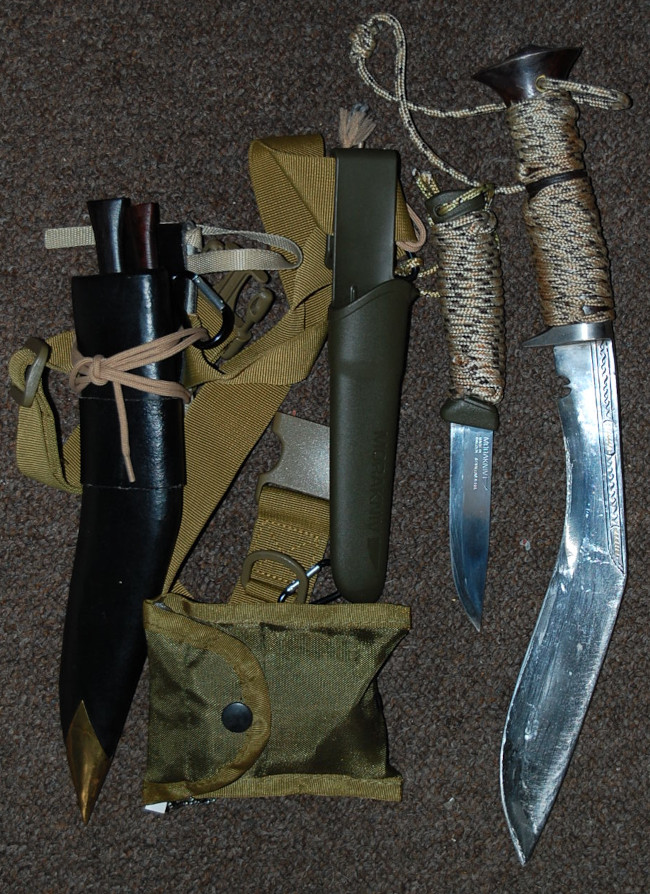
Also with the bag I have a hip‑belt with my kukri, Mora, sharpening stone and a small fire kit mounted on it.
Clothing
This topic of clothing to keep with your bug-out-bag I have previously discussed in my blog on “Dressing for Bug-Out”.
This blog will concentrate on what clothing to have in your bag.
A bug‑out bag is intended to support you for 72 hours, so you will not need that many changes of clothing.
On the other hand, wind, rain and sun can kill you in a few hours if your clothing is not suitable.
How much clothing to carry when travelling light?
Opinions differ here.
My theory is that you should have at least one complete change of clothing, since you should expect an unexpected dunking.
Some soldiers wear one set of clothing during the day and change into their alternate set to sleep, letting the day set dry and air. Kephart suggested a similar strategy.
Have a Change of Clothes
It is not practical to carry a spare parka, but a spare shirt/tunic and trousers will take little room inside a pack.
You should have two sets of undergarments, a “wear and a spare”, appropriate for season and climate.
Thermal underwear is great when it is really cold. Under most conditions it will have you sweaty and miserable. Have intermediate options.
Socks
One of the first clothing purchases for your bug-out bag that you should make is to invest in three or four pairs of good quality woollen socks. You will get nowhere without your feet.
Four pairs let you change into a drier pair whenever necessary. You may double up if it is unexpectedly cold. Two pairs of medium weight socks will be warmer than a single extremely thick pair.
A couple of extra (cheaper?) pairs of socks are worth the weight and may be tucked into various locations to pad other gear, stop things rattling etc.
For very cold conditions, have two pairs of boot insoles and alternate them. One pair airs and dries while the other pair is worn. Punch a hole in them so you can tie them to something when airing.
Similarly, sew loops of ribbon to your socks so they may be tied to the outside of your pack while drying.
Rain Poncho
Have a rain-poncho or two. If your poncho is in a pouch or has a pocket, keep a couple of lengths of cord with it. Paracord stretches, so something non-elastic is preferable. These will be handy when rigging your poncho as a shelter.

If it is very windy, one of these cords may be used as a belt for your poncho.
I always have a couple of spans of bootlace or cord in my left trouser pocket, and these may be used with the poncho in the same fashion.
Accessories such as hats, scarf and gloves may make the difference between comfort and catastrophe. Have spares!
Gloves
You should carry protective gloves and warm gloves. Glove liners are useful when you need more dexterity or it is especially cold.
When the wind is high or the mercury low, losing a glove can be serious. Have a spare set of gloves may save you using spare socks as mittens.
Sew a loop of ribbon, webbing or elastic to each of your gloves. You can attach them to your coat cuffs using a safety pin. This is probably more secure than the clips sold for the same purpose.
Or tie the gloves to a cord run down your sleeves and across your shoulders.
Headwear
Hats are another item it is wise to carry spares of. Extra woolly hat or headover in the cold, extra hat with brim in sun. In some parts of the world you may want a rainhat!
Pack a watch-cap with your sleeping gear as a nightcap.
Don’t let the wind steal your head-coverings! Buy a metre or two of elastic and add hat-straps to the hats that do not have them.
Carry several bandannas (some on your person) and a spare keffiyeh or scarf, depending on climate and season. Bandannas are another practical way to stop gear rattling, and serve as water filters, havelocks, oven gloves etc.
Eye Protection
Your bug-out bag should include goggles and/or sunglasses. In some environments these will be very important, so have spares. In such conditions carry one set on your person and your spares in your bag.
Hi-Viz
I prefer my clothing to be neutral or natural shades.
There will be times when you very much want to be seen, however.
A hi-viz jerkin with reflective tape weighs little and packs up small. You cannot really use this while wearing your poncho, so I would also recommend an orange or red cap or woolly hat.
There are hi-viz rucksack covers that increase your visibility when viewed from the rear. These might not fit if you have a lot of gear on the outside of your pack. In this case, have a panel of hi-viz material and reflective tape with ties that may be knotted around your rucksac straps.
This panel may be used as a flag to attract rescuers to your camp site.
If walking along roadways, walk on the side of oncoming traffic.
